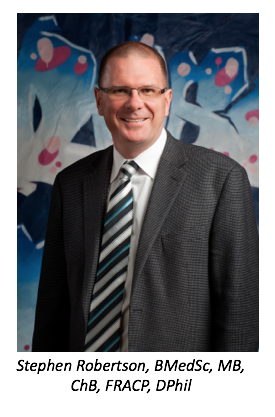Gene Responsible for Recessive Spondylocarpotarsal Synostosis Syndrome Identified
This is the first time that more than one gene has been implicated as the cause of spondylocarpotarsal synostosis syndrome.

Investigators from the University of Otago in New Zealand have identified that mutations in both the FLNB gene and the MYH3 gene are the cause of a rare genetic disease that results in the fusion of bones in the spine and limbs: spondylocarpotarsal synostosis syndrome (SCTS).
This is the first time that more than one gene has been implicated as the cause of this disorder, illustrating the valuable insight that genomic analysis can provide.
Stephen Robertson, BMedSc, MB, ChB, FRACP, DPhil, Cure Kids Professor of Paediatric Genetics at University of Otago, a global expert in single gene disorders that occur in children, explained his team at the Clinical Genetics Group’s inspiration for the study in an exclusive interview with Rare Disease Report®.
“I think it’s really clear that health systems are realizing genomics play a central part in the health care of rare diseases now, and that really has huge momentum. A good number of rare diseases are genetic, and so, precision genetics—precision diagnostics using high-end, quick, yet accurate, genetics—is going to transform diagnoses,” he said. “I suppose this is an example of something that presumes a couple of novel points, such as the fact that we can define disease adherence, but we have surprises to find—like these ones we have found—and others as well. Barging in, thinking we know it all is a bit hubristic, and we have to keep our minds open to unusual patterns of inheritance and heterogeneity of further subtypes in rare diseases.”
For the study published in the American Journal of Human Genetics, Dr. Robertson and his team used genome sequencing to identify the culpable gene mutated in SCTS. In 5 individuals without FLNB mutations from 3 families, initial whole-exome sequencing (WES) indicated that all 5 were heterozygous for 1 of 2 independent splice-site variants in MYH3, a gene in which monoallelic variants have been implicated in dominantly inherited forms of the disorder.
Although evidence suggested that 3 of the 5 individuals shared 2 allelic haplotypes encompassing MYH3, no second variant was located in the WES datasets. Of these 3 individuals, subsequent genome sequencing demonstrated a variant altering a 5′ UTR splice donor site (rs557849165 in MYH3) not represented by exome-capture platforms. When the team expanded the cohort to include 16 SCTS-affected individuals without FLNB mutations, 9 had truncating mutations transmitted by unaffected parents, and 6 had inherited the rs557849165 variant in trans, demonstrating an observation at odds with the population allele frequency for this variant, according to study authors.
While the rs557849165 variant interrupts splicing in the 5′ UTR, it still allows MYH3 translational initiation, but with reduced efficiency. Consequently, the data suggest that while some MYH3 variants cause dominant SCTS, others do not—except in the context of compound heterozygosity for a second hypomorphic allele, the authors write. In the context of simplex presentations of SCTS, these observations pose challenges to genetic diagnosis.
“The unusual thing about this particular gene, MYH3, is that it follows 2 forms of inheritance for this disorder, so it’s a bit tricky for geneticists,” explained Dr. Robertson. “For some families, the pattern of inheritance is dominant, and for others, it’s recessive. Most interestingly though, unlike most of these disorders, this condition seems to be progressive after birth, and so, we have an opportunity if we appropriately understand this process, to perhaps intervene because the baby is out and about, and we can begin to think about therapy as opposed to something happening in embryonic development in utero.”
He stressed that identifying the genetic factors that drive SCTS and discovering the gene responsible for the disorder can be used to inform future potential diagnostic and therapeutic options.